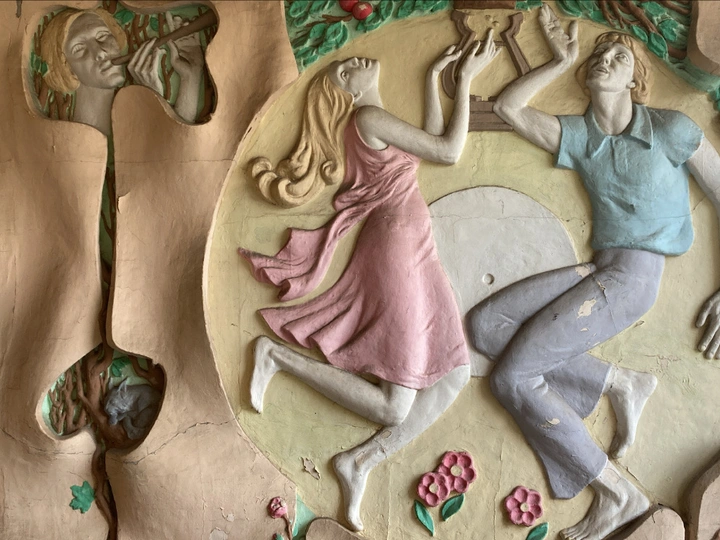Totalitarian Esthetics & Transformative Experience

Anastasiia Kalyta
Mykhailo Bogachov is a Ukrainian researcher and curator, interested in normativity in technology and art. Born in Kyiv, Ukraine. BA in Literature, MA in Philosophy (National University of Kyiv-Mohyla Academy, Kyiv). Ph.D. candidate in AI ethics at H. Skovoroda Institute of Philosophy, NAS of Ukraine; currently based at the University of Tübingen, Germany. Assistant curator at Ukho Music, a curatorial agency for contemporary academic and experimental music. Previously worked as a PR manager at Ukrainian organizations for music and film, and as a freelance journalist in music and art criticism. Co-founder of Open Library of Fine Arts (Kyiv).
Anastasiia Kalyta is a journalist, editor, and writer from Kyiv, based in Berlin. Holds a BA in Literature and Linguistics and an MA in Journalism and Communications from the National University of Kyiv-Mohyla Academy, where she made a research that examined the media representation of Holocaust commemoration efforts by the Babyn Yar Holocaust Memorial Centre. Anstasiia spent over a decade covering Ukraine's cultural life for various fashion and culture publications. In 2019, Anastasiia co-founded Support Your Art, a prominent platform for Ukrainian contemporary art, earning her a spot on the “30 under 30: Who Creates the Future of Ukrainian Media” list of the Georgiy Gongadze Prize.
"Before the big war, we used to have those endless arguments about how to preserve the sublime beauty of Soviet architecture in Kyiv. Obviously, many looked up to how it's done in Berlin, where statues of Lenin, provided they have artistic value, are preserved, while Soviet-era buildings, maintained in a pristine state, are a big part of city's tourism brand. But now, when Russians are erecting brand new statutes of Lenin in occupied Ukrainian towns, and some of our sophisticated Berlin friends came out as unironic supporters of the Russian genocide in Ukraine — now I'm thinking that being a fan of totalitarian urban aesthetics isn't just a matter of private taste. Totalitarian architecture is beautiful not despite but precisely because of what it means. When I'm standing in the line for Berghain, I can't help noticing that this menacing building looks just like a Soviet secret police office. It just screams industrial-scale violence. Don't other people notice this? Or do they enjoy it?" — Mykhailo or Anastasiia during a walk in Berlin.
Through this project, we will develop a conceptual framework to examine the normative meanings of non-commemorational, everyday life experiences city dwellers choose to have in urban spaces marked by totalitarian aesthetics or history. If having a picnic at an ex-Cold War era airfield where a concentration camp once stood represents a celebration of freedom, what kind of freedom, morally speaking, does this celebrate? What does it take to "revitalize" a totalitarian public building, from a normative perspective? If totalitarian esthetics is a moral temptation, how can we subvert it while preserving the culturally significant aspects of totalitarian art? Our particular interest is in the cases of the Kakhovka dam, which has been blown up by Russia, Tempelhof field, Gorky Theater, and Dnipro's modernist buildings. The analysis aims to investigate similar cases where totalitarian infrastructure is utilized for destructive purposes.